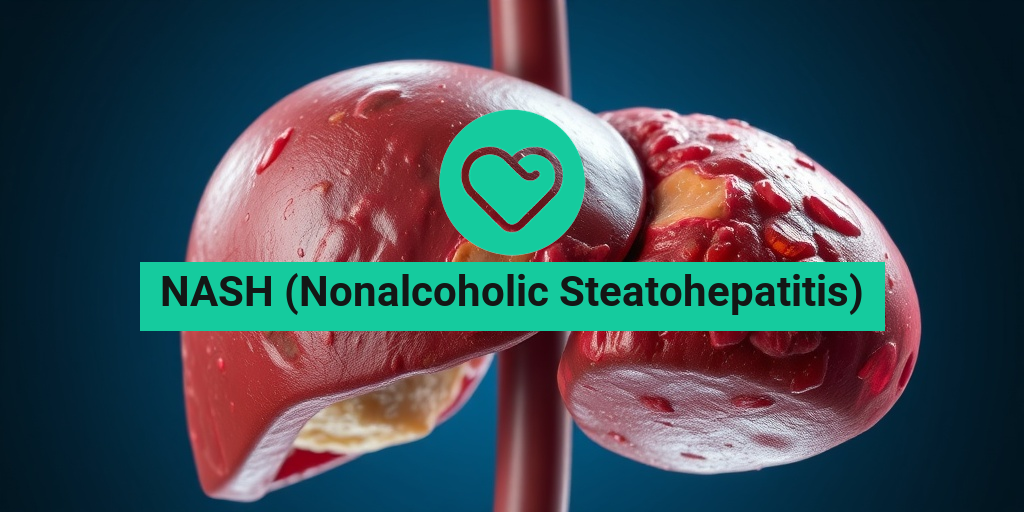What Is Child Abuse?
Child abuse is a grave violation of a child’s rights and well-being. It encompasses a range of harmful behaviors directed at children, which can have lasting effects on their physical, emotional, and psychological health. The definition of child abuse varies across different cultures and legal systems, but it generally includes any act that results in harm or potential harm to a child. This can occur in various settings, including the home, school, or community.
According to the child abuse statistics, millions of children worldwide experience abuse each year. This alarming reality highlights the urgent need for awareness, prevention, and intervention. Understanding what constitutes child abuse is the first step in combating this issue.
Recognizing the Signs of Child Abuse
Identifying child abuse can be challenging, as it often occurs behind closed doors. However, there are several signs that caregivers, teachers, and community members can look for:
- Physical Signs: Unexplained injuries, bruises, or burns.
- Emotional Signs: Sudden changes in behavior, withdrawal, or fearfulness.
- Neglect Signs: Poor hygiene, malnutrition, or lack of supervision.
If you suspect a child is being abused, it is crucial to take action. Reporting your concerns to the appropriate authorities can help protect the child and provide them with the support they need.
Types of Child Abuse
Child abuse can be categorized into several types, each with its own characteristics and implications. Understanding these types is essential for effective prevention and intervention.
1. Physical Abuse
Physical abuse involves the intentional use of force against a child, resulting in injury or harm. This can include hitting, kicking, burning, or any other form of physical aggression. The effects of physical abuse can be both immediate and long-lasting, leading to physical injuries and emotional trauma.
2. Emotional Abuse
Emotional abuse, often overlooked, is equally damaging. It includes behaviors that harm a child’s self-worth or emotional well-being, such as constant criticism, rejection, or isolation. Children who experience emotional abuse may struggle with self-esteem and develop mental health issues later in life.
3. Sexual Abuse
Sexual abuse involves any sexual activity with a child, including inappropriate touching or exploitation. This type of abuse can have severe psychological effects, leading to anxiety, depression, and difficulties in forming healthy relationships in the future.
4. Neglect
Neglect is the failure to provide for a child’s basic needs, including food, shelter, medical care, and education. Children who experience neglect may suffer from malnutrition, poor hygiene, and developmental delays. It is crucial to recognize that neglect can be just as harmful as other forms of abuse.
5. Child Abuse and Neglect in Society
Child abuse and neglect are societal issues that require collective action. During Child Abuse Prevention Month, communities come together to raise awareness and promote resources for prevention. Organizations and hotlines, such as the child abuse hotline, play a vital role in providing support and guidance to those in need.
In many countries, laws have been established to protect children from abuse. For instance, the Child Abuse Act outlines legal definitions and consequences for perpetrators. Understanding these laws can empower individuals to take action and advocate for children’s rights.
For those seeking more information on child abuse and its prevention, resources like Yesil Health AI (yesilhealth.com) offer evidence-based answers and support. By educating ourselves and others, we can create a safer environment for children and help break the cycle of abuse.
In conclusion, child abuse is a multifaceted issue that requires awareness, understanding, and action. By recognizing the signs and types of abuse, we can work together to protect our children and foster a healthier, safer society. 🌟

Signs of Child Abuse
Recognizing the signs of child abuse is crucial for early intervention and support. Children may not always verbalize their experiences, so being aware of the indicators can help caregivers, teachers, and community members take action. Here are some common signs to look out for:
Physical Signs
- Unexplained Injuries: Frequent bruises, burns, or fractures that cannot be explained by normal play.
- Frequent Absences: Regularly missing school or other activities without a clear reason.
- Changes in Appearance: Poor hygiene, inappropriate clothing for the weather, or noticeable weight changes.
Behavioral Signs
- Withdrawal: A child may become withdrawn, showing little interest in social interactions or activities they once enjoyed.
- Fearfulness: Exhibiting fear around certain adults or environments, which may indicate a traumatic experience.
- Regression: Reverting to earlier behaviors, such as bedwetting or thumb-sucking, especially in older children.
Emotional Signs
- Low Self-Esteem: A child may express feelings of worthlessness or exhibit self-destructive behavior.
- Difficulty Concentrating: Struggling to focus in school or during activities, which can affect academic performance.
- Outbursts of Anger: Sudden, intense anger or aggression that seems disproportionate to the situation.
It’s important to remember that these signs do not definitively indicate child abuse, but they can be red flags. If you suspect a child is being abused, it’s essential to take action by reporting your concerns to the appropriate authorities or child protection services. 🛡️
Causes and Risk Factors
Understanding the causes and risk factors associated with child abuse can help in developing effective prevention strategies. While there is no single cause of abuse, several factors can contribute to a higher risk of abuse occurring.
Family Dynamics
- Parental Stress: High levels of stress due to financial issues, unemployment, or relationship problems can lead to abusive behaviors.
- Substance Abuse: Parents or caregivers who abuse drugs or alcohol may be more likely to engage in abusive behavior.
- History of Abuse: Individuals who were abused as children may be more likely to abuse their own children, perpetuating a cycle of violence.
Community and Societal Factors
- Poverty: Families living in poverty may experience increased stress and limited resources, which can contribute to a higher risk of abuse.
- Social Isolation: Lack of support from family, friends, or community can leave parents feeling overwhelmed and more likely to resort to abuse.
- Community Violence: Living in a violent neighborhood can normalize aggressive behavior and increase the likelihood of abuse.
Child Characteristics
- Age: Younger children, especially infants and toddlers, are at a higher risk due to their dependency on adults.
- Disability: Children with physical or mental disabilities may be more vulnerable to abuse due to their increased reliance on caregivers.
- Behavioral Issues: Children who exhibit challenging behaviors may provoke frustration in caregivers, leading to potential abuse.
By understanding these causes and risk factors, we can work towards creating a safer environment for children. Awareness and education are key components in preventing child abuse and ensuring that children grow up in nurturing and supportive environments. 🌈

Impact on Child Development
Child abuse is a grave issue that can have profound and lasting effects on a child’s development. Understanding these impacts is crucial for parents, educators, and caregivers to foster a safe and nurturing environment for children. The consequences of child abuse can manifest in various ways, affecting emotional, cognitive, and social development.
Emotional Consequences
Children who experience abuse often struggle with emotional regulation. They may exhibit symptoms of anxiety, depression, and low self-esteem. The trauma inflicted by abuse can lead to difficulties in forming healthy relationships later in life. For instance, a child who has been neglected may find it hard to trust others, leading to isolation and further emotional distress.
Cognitive Development
Abuse can also hinder cognitive development. Children who are subjected to abuse may have trouble concentrating and learning in school. Studies have shown that these children often score lower on standardized tests and may struggle with academic achievement. The stress associated with abuse can impair brain development, affecting memory and learning capabilities.
Social Skills and Behavior
Socially, children who have experienced abuse may exhibit aggressive or withdrawn behaviors. They might have difficulty interacting with peers, leading to social isolation. This can create a cycle where the child feels increasingly alienated, which can exacerbate feelings of worthlessness and despair. Additionally, children who witness or experience violence may learn to normalize such behavior, perpetuating a cycle of abuse.
Long-Term Effects
The long-term effects of child abuse can extend into adulthood. Many survivors of child abuse face challenges such as substance abuse, mental health disorders, and difficulties in maintaining stable relationships. Understanding these long-term impacts is essential for developing effective child abuse prevention strategies and support systems.
Reporting Child Abuse
Reporting child abuse is a critical step in protecting vulnerable children and ensuring they receive the help they need. Knowing how to recognize the signs of abuse and understanding the reporting process can empower individuals to take action.
Recognizing the Signs of Abuse
Before reporting, it’s essential to recognize the signs of child abuse. These can include:
- Physical signs: Unexplained injuries, bruises, or burns.
- Behavioral changes: Sudden changes in behavior, withdrawal, or aggression.
- Neglect: Poor hygiene, malnutrition, or lack of supervision.
How to Report Child Abuse
If you suspect a child is being abused, it’s crucial to report your concerns. Here’s how you can do it:
- Contact local authorities: Reach out to your local child protective services or law enforcement.
- Use a hotline: Many regions have dedicated child abuse hotlines where you can report anonymously.
- Document your observations: Keep a record of any signs or incidents that raised your concerns.
Legal Protections and Responsibilities
In many jurisdictions, there are laws that require certain professionals, such as teachers and healthcare providers, to report suspected child abuse. Understanding these child abuse laws is vital for anyone working with children. Failure to report can have legal consequences, and more importantly, it can leave a child in a harmful situation.
Support for Victims
Once abuse is reported, it’s essential to ensure that the child receives the necessary support. This can include counseling, medical care, and a safe environment. Organizations dedicated to child abuse prevention often provide resources and support for both victims and their families, helping them to heal and rebuild their lives.
In conclusion, recognizing the impact of child abuse on development and understanding the reporting process are crucial steps in safeguarding children. By being informed and proactive, we can contribute to a safer environment for all children. 🌟

Support for Victims
Child abuse is a devastating reality that affects countless children and families worldwide. Providing support for victims is crucial in helping them heal and regain their sense of safety and trust. Understanding the various forms of support available can empower survivors and their families to navigate the complex journey toward recovery.
Understanding the Impact of Child Abuse
Child abuse can take many forms, including physical, emotional, sexual abuse, and neglect. Each type leaves deep emotional and psychological scars that can last a lifetime. Victims may experience:
- Low self-esteem
- Depression and anxiety
- Post-traumatic stress disorder (PTSD)
- Difficulty in forming relationships
Recognizing these impacts is the first step in providing effective support. It’s essential to approach victims with empathy and understanding, creating a safe space for them to express their feelings and experiences.
Types of Support Available
There are various avenues for support that victims of child abuse can explore:
- Counseling and Therapy: Professional therapy can help victims process their trauma and develop coping strategies. Therapists trained in trauma-informed care can provide a safe environment for healing.
- Support Groups: Connecting with others who have experienced similar situations can be incredibly validating. Support groups offer a sense of community and shared understanding.
- Hotlines and Helplines: Many organizations offer confidential support through hotlines. These resources can provide immediate assistance and guidance for victims in crisis.
- Legal Support: Understanding child abuse laws and the legal rights of victims is crucial. Legal aid organizations can help navigate the complexities of the legal system.
In addition to these resources, it’s important for friends and family to offer their support. Listening without judgment and validating the victim’s feelings can make a significant difference in their recovery journey. 💖
Preventing Child Abuse
Preventing child abuse is a collective responsibility that requires awareness, education, and proactive measures. By understanding the signs and implementing effective prevention strategies, we can create safer environments for children. 🌍
Recognizing the Signs of Abuse
Early detection is key in preventing child abuse. Some common signs to watch for include:
- Unexplained injuries or frequent injuries
- Changes in behavior, such as withdrawal or aggression
- Fear of going home or being around certain individuals
- Declining academic performance
If you notice these signs, it’s essential to take them seriously and seek help. Reporting suspected abuse can save a child from further harm.
Community Involvement and Education
Community programs play a vital role in preventing child abuse. Here are some effective strategies:
- Education and Awareness Campaigns: Informing the public about child abuse, its signs, and prevention methods can empower communities to take action.
- Parenting Classes: Offering resources and training for parents can help them develop healthy parenting skills and recognize the importance of nurturing environments.
- Safe Spaces for Children: Creating safe environments, such as after-school programs and community centers, can provide children with supportive adults and positive experiences.
Additionally, Child Abuse Prevention Month in April serves as a reminder for communities to come together and promote awareness and prevention strategies. Engaging in local events and initiatives can foster a culture of vigilance and support. 🎗️
Reporting and Resources
If you suspect a child is being abused, it’s crucial to report it to the appropriate authorities. In the United States, the Child Abuse Hotline is available to provide guidance on how to proceed. Each state has its own laws and regulations regarding child abuse, so understanding these can help in taking the right steps.
By working together, we can create a safer world for children, ensuring they grow up in environments free from abuse and neglect. Remember, prevention starts with awareness and action! 💪

Frequently Asked Questions about Child Abuse
What is the definition of child abuse?
Child abuse refers to any intentional harm or mistreatment of a child, which can take various forms including physical, emotional, sexual abuse, and neglect. It is crucial to recognize the signs and seek help if you suspect a child is being abused.
What are the statistics on child abuse?
According to recent studies, child abuse remains a significant issue worldwide. Statistics indicate that millions of children experience some form of abuse each year. Understanding these statistics can help raise awareness and promote prevention efforts.
What laws exist to protect children from abuse?
Many countries have established child abuse laws to protect children. These laws define abuse, outline reporting requirements, and establish penalties for offenders. It’s important to be aware of the specific laws in your region to ensure proper protection for children.
How can I report suspected child abuse?
If you suspect a child is being abused, it is vital to report it to the appropriate authorities. In many areas, there are dedicated child abuse hotlines that you can call to report your concerns anonymously. Always prioritize the child’s safety and well-being.
What is the role of child abuse prevention month?
Child Abuse Prevention Month is observed every April to raise awareness about child abuse and promote prevention strategies. During this month, various organizations and communities engage in activities aimed at educating the public about the importance of protecting children.
What resources are available for victims of child abuse?
Victims of child abuse can access various resources, including counseling services, support groups, and legal assistance. Many organizations are dedicated to helping survivors heal and rebuild their lives. It’s essential to reach out for help if you or someone you know is a victim.
How can I help prevent child abuse in my community?
There are several ways to contribute to the prevention of child abuse in your community, including:
- Educating yourself and others about the signs of abuse.
- Supporting local organizations that work to protect children.
- Advocating for stronger child protection laws.
- Volunteering your time to help at-risk families.
What is the child abuse registry?
A child abuse registry is a database that contains information about individuals who have been found to have committed child abuse. This registry is often used by employers and organizations to ensure the safety of children in their care.
Where can I find more information about child abuse laws in my area?
To find detailed information about child abuse laws in your area, you can visit government websites, local child protective services, or legal aid organizations. They can provide you with the necessary resources and guidance.




